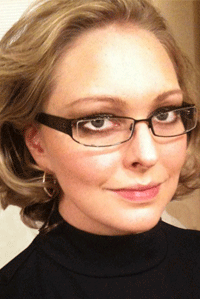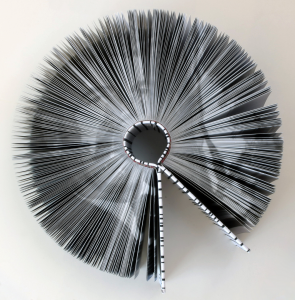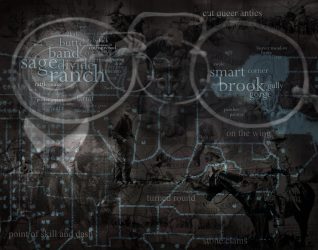
Carrie Roy told us about her Tools for Discovery in 2013 when she was a postdoctoral researcher in the Living Environments Laboratory at WID working on digital humanities research with an emphasis on computational approaches to text analysis. She currently works as an artist in Denver, Colorado, exploring text analysis as well as representations of data and information through innovative art exhibitions.
Roy recently collaborated with the Dictionary of American Regional English (DARE) to create a singular exhibition titled Words Count: a Rantum Scoot through DARE, a collection of objects representing terms catalogued by DARE along with statistics on each spoken variant. The exhibit can be viewed online or at Memorial Library. We caught up with Roy, now a WID alumna, to get an update on her Tools for Discovery.
What do you work on?
I do both text analysis and work with a wide range of creative software to develop art pieces that express the research results or data.
What are your tools for analysis?
R, TextWrangler, AntConc, Gephi, and tools I’ve worked with WID folks to create: WordCAKE for viewing high frequency words over sequential texts (Ross Tredinnick) and ScripThreads for viewing character activity over the span of a narrative (Kevin Ponto).
Tools for Writing?
I use Pages for writing, especially since I use a lot of images and it integrates files and images very well. For generating preliminary concepts for pieces, I actually work with Keynote because it is so easy to work on sequential or variable examples of images and then share as a PDF.

Tools for Collaboration?
Google Docs, Skype/FaceTime, Dropbox, Trello.
Your ultimate tool for discovery?
Angle grinder and palm sander — I do hours and hours of power carving and sanding on my wood sculptures. While it is monotonous and physically demanding, it is also a perfect state to be in mentally to come up with creative ideas. Compared to other “in the zone” or “flow” states it much louder and dirtier… but it works for me.
— curated by Pat Pointer and Nolan Lendved


You must be logged in to post a comment.